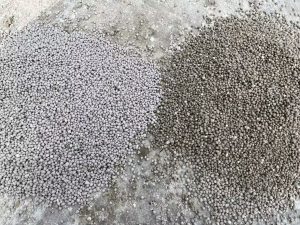Cat litter granules are a crucial component for maintaining a clean and odor-free environment for our feline companions. As the demand for cat litter products continues to rise, manufacturers are seeking efficient and cost-effective ways to produce cat litter granules on a large scale. In this article, we will explore the process of making cat litter granules for large-scale capacity, focusing on the key steps, materials, and equipment involved in the production.

cat litter pellets
Step 1: Material Selection
The first step in the large-scale production of cat litter granules is choosing the right materials. Typically, cat litter granules are made from natural or synthetic materials such as clay, silica gel, recycled paper, or wood. Each material has its unique properties and benefits, such as odor control, clumping capabilities, and absorbency. For large-scale capacity, manufacturers often opt for materials that are abundant, cost-effective, and can be easily sourced in bulk.
Step 2: Material Preparation
Once the materials are selected, they undergo a preparation process to ensure they meet the required specifications for cat litter production. In the case of clay, it is usually mined and then crushed into finer particles to enhance its absorbent properties. Silica gel and recycled paper materials may undergo a drying process to remove excess moisture, while wood-based materials might be chipped or pelletized before further processing.
Step 3: Blending and Mixing
To create cat litter granules with consistent properties, the prepared materials are blended and mixed in precise proportions. This mixing process ensures that the granules will possess the desired characteristics, such as clumping ability, low dust content, and efficient odor absorption. Manufacturers utilize specialized mixing equipment to achieve uniformity in the granule composition.
Step 4: Granulation
The blended materials are now ready for granulation. This process involves forming the cat litter into specific shapes and sizes. There are two main granulation techniques commonly used for large-scale production: extrusion and agglomeration.
Extrusion: In extrusion, the blended material is forced through a die to produce cylindrical granules of a consistent diameter. These extruded granules offer excellent absorbency and clumping properties.
Agglomeration: Agglomeration, on the other hand, involves using a binding agent to combine smaller particles into larger granules. This process creates granules with varying shapes and sizes, providing diverse options for cat owners while maintaining quality performance.
Step 5: Drying and Cooling
After granulation, the cat litter is dried to remove any remaining moisture and enhance its shelf life. Manufacturers employ large drying ovens or rotary dryers for this purpose. Once the drying process is complete, the granules undergo a cooling phase to prevent any damage and maintain their structural integrity.
Step 6: Sifting and Screening
To ensure uniformity and eliminate any oversized or undersized granules, the dried and cooled cat litter undergoes sifting and screening processes. This step guarantees that the final product meets the desired size specifications.
Step 7: Packaging
With the cat litter granules now produced and thoroughly screened, they are ready for packaging. Large-scale manufacturers use automated packaging systems capable of handling substantial quantities efficiently. The cat litter is packed into various sizes, such as small bags, bulk sacks, or even in more environmentally-friendly options like compostable packaging.
Conclusion: The production of cat litter granules for large-scale capacity involves a carefully orchestrated series of steps, from material selection to packaging. The process ensures that the cat litter granules meet the required quality standards and cater to the needs of cat owners worldwide. By producing cat litter on a larger scale, manufacturers can provide a steady supply of this essential pet product, contributing to the well-being of both cats and their owners.
